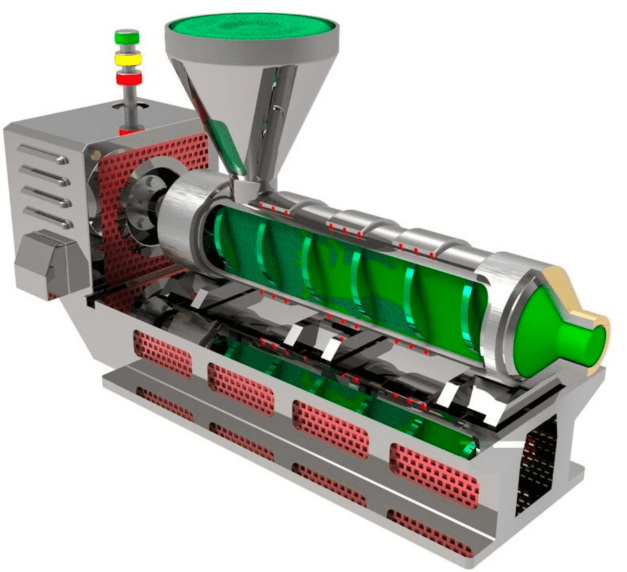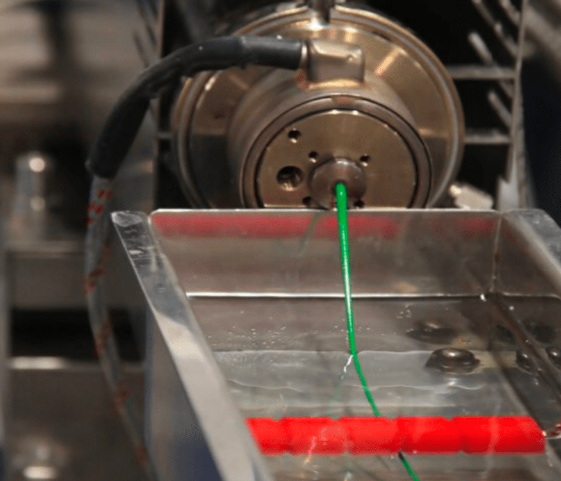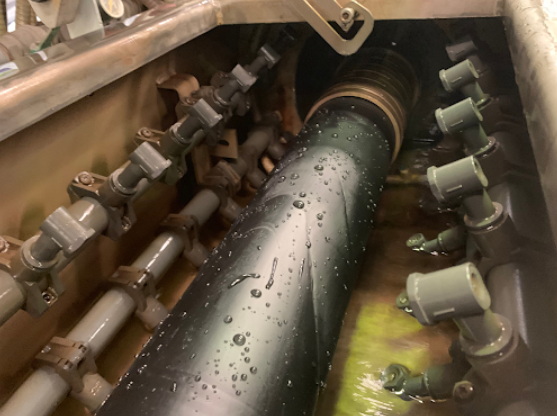Content Menu
● Introduction to Profile Extrusion
● Components of Profile Extrusion Equipment
● How Profile Extrusion Equipment Works
● Types of Profile Extrusion Equipment
● Applications of Profile Extrusion Equipment
● Challenges and Solutions in Profile Extrusion
● Future Developments in Profile Extrusion
● Environmental Considerations
● Economic Impact of Profile Extrusion
● Case Studies in Profile Extrusion
● Conclusion
● Frequently Asked Questions
>> 1. What is Profile Extrusion Equipment?
>> 2. How Does Profile Extrusion Equipment Work?
>> 3. What Are the Main Components of Profile Extrusion Equipment?
>> 4. What Are the Applications of Profile Extrusion Equipment?
>> 5. What Are Common Challenges in Profile Extrusion?
Profile extrusion equipment is a specialized machinery system used to create continuous profiles from various materials, such as plastics and metals. This process involves melting the raw material, shaping it through a die, and then cooling it to form the desired profile. In this article, we will delve into the details of profile extrusion equipment, its components, and how it works, along with examples and applications.

Introduction to Profile Extrusion
Profile extrusion is a versatile manufacturing technique that allows for the production of a wide range of products, from simple shapes like tubes and rods to complex profiles used in construction, automotive, and consumer goods. The process involves several key steps: material preparation, melting, extrusion through a die, cooling, and cutting to the desired length.
Material preparation is crucial as it ensures that the raw materials are consistent and free from contaminants. For plastic extrusion, this typically involves feeding plastic pellets into a hopper. The pellets are often dried to remove moisture, which can affect the quality of the final product. For metal extrusion, such as aluminum, the material is heated and prepared for extrusion. Aluminum billets are commonly used and are heated to a high temperature to make them malleable.
Components of Profile Extrusion Equipment
Profile extrusion equipment consists of several critical components:
1. Hopper: This is where the raw material is fed into the machine. The hopper is designed to hold a large quantity of material and feed it consistently into the extruder.
2. Extruder: This includes a heated barrel and rotating screws that melt and mix the material. The extruder is the heart of the profile extrusion process, as it transforms the raw material into a molten state.
3. Die: The molten material is pushed through the die to form the desired profile shape. The die is custom-made to produce specific profiles and is a critical component in achieving the desired product shape.
4. Cooling System: This can be a water bath or air cooling system to solidify the extruded profile. Cooling is essential to ensure that the profile retains its shape and does not deform.
5. Puller: Maintains tension and speed during cooling. The puller ensures that the profile is pulled at a consistent speed to prevent sagging or stretching.
6. Cutter: Cuts the profile to the required length. The cutter is typically a saw or a shear that cuts the profile into manageable lengths.
How Profile Extrusion Equipment Works
The process of profile extrusion involves several stages:
1. Melting: The raw material is melted in the extruder. This process involves heating the material to a high temperature until it becomes molten and can be easily shaped.
2. Extrusion: The molten material is pushed through the die. The die gives the material its final shape, and the pressure from the extruder ensures that the material fills the die completely.
3. Cooling: The extruded profile is cooled to solidify. Cooling is a critical step as it determines the final properties of the product, such as its strength and flexibility.
4. Pulling and Cutting: The profile is pulled to maintain tension and then cut to length. This ensures that the profile is straight and consistent in size.
Types of Profile Extrusion Equipment
There are different types of extruders used in profile extrusion, including single-screw and twin-screw extruders. Single-screw extruders are commonly used for standard melting and mixing functions. They are simple in design and cost-effective, making them suitable for many applications. Twin-screw extruders offer better mixing capabilities and are often used for materials with additives. They provide more precise control over the mixing process, which is essential for producing complex profiles with specific properties.

Applications of Profile Extrusion Equipment
Profile extrusion equipment is used in various industries, including construction, automotive, and consumer goods. In construction, extruded profiles are used for window frames, door frames, and other architectural features. In the automotive sector, extruded profiles are used for parts such as trim, seals, and structural components. In consumer goods, extruded profiles are used in household items like furniture, appliances, and toys.
The versatility of profile extrusion allows manufacturers to produce a wide range of products with precise dimensions and properties. This makes it an essential technology in modern manufacturing, enabling the creation of complex and customized products efficiently.
Challenges and Solutions in Profile Extrusion
Common challenges in profile extrusion include material inconsistency, temperature control issues, and die maintenance. Material inconsistency can lead to variations in product quality, while temperature control issues can affect the melting and cooling processes. Die maintenance is crucial as a worn-out die can produce profiles with defects.
Solutions to these challenges involve optimizing process conditions, using high-quality raw materials, and regular machine maintenance. Optimizing process conditions includes adjusting temperature settings and screw speeds to ensure consistent melting and extrusion. Using high-quality raw materials reduces the risk of material inconsistency. Regular maintenance of the die and other components ensures that the equipment operates efficiently and produces high-quality profiles.
Future Developments in Profile Extrusion
The future of profile extrusion is promising, with advancements in technology and materials science. New materials like bioplastics and advanced composites are being developed, offering sustainable and high-performance options for manufacturers. Additionally, advancements in automation and digitalization are improving efficiency and precision in the extrusion process. These developments will enable the production of more complex profiles with enhanced properties, further expanding the applications of profile extrusion.
Environmental Considerations
Profile extrusion equipment can have environmental impacts, primarily related to energy consumption and material waste. However, modern extrusion technologies are becoming more energy-efficient, and recycling programs are being implemented to reduce waste. The use of recycled materials in extrusion is also increasing, which helps reduce the environmental footprint of the process. Furthermore, the development of sustainable materials and processes is a key focus area for manufacturers, aiming to minimize environmental impacts while maintaining productivity.
Economic Impact of Profile Extrusion
The economic impact of profile extrusion is significant, as it provides a cost-effective method for producing complex shapes and profiles. This technology allows manufacturers to reduce production costs by minimizing material waste and optimizing production processes. Additionally, profile extrusion enables the creation of customized products, which can lead to increased market competitiveness and profitability for manufacturers.
Case Studies in Profile Extrusion
Several case studies highlight the effectiveness of profile extrusion in various industries. For instance, in the automotive sector, profile extrusion has been used to create lightweight yet strong components, contributing to improved vehicle efficiency and safety. In construction, extruded profiles have been used to create energy-efficient window frames and door systems, enhancing building insulation and reducing energy consumption.
These case studies demonstrate the versatility and benefits of profile extrusion equipment in different applications, showcasing its potential to drive innovation and efficiency in manufacturing.
Conclusion
Profile extrusion equipment plays a crucial role in manufacturing a wide range of products with precise shapes and dimensions. Understanding its components and operation is essential for optimizing production efficiency and product quality. As technology continues to evolve, profile extrusion will remain a vital part of modern manufacturing, offering innovative solutions for various industries.

Frequently Asked Questions
1. What is Profile Extrusion Equipment?
Profile extrusion equipment is machinery used to create continuous profiles from materials like plastics and metals by melting, shaping, and cooling them.
2. How Does Profile Extrusion Equipment Work?
The equipment works by feeding raw material into a hopper, melting it in an extruder, pushing it through a die to form the desired shape, cooling it, and then cutting it to length.
3. What Are the Main Components of Profile Extrusion Equipment?
The main components include a hopper, extruder, die, cooling system, puller, and cutter.
4. What Are the Applications of Profile Extrusion Equipment?
Applications include construction, automotive, and consumer goods industries, producing items like window frames, automotive parts, and household items.
5. What Are Common Challenges in Profile Extrusion?
Common challenges include material inconsistency, temperature control issues, and die maintenance, which can be addressed by optimizing process conditions and regular maintenance.






















